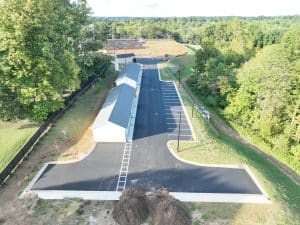Difference between Asphalt Paving and Milling Paving
Asphalt paving and milling pavings are both road construction and rehabilitation operations but they are not just different terms for the same process. Asphalt is the commonest material used all over the world for surfacing roads, airports, parking lots etc.
Asphalt paving may simply be referred to as the process of covering a surface with asphalt. It involves laying the asphalt flat, usually through the use of specialized equipment known as a ‘paver’, followed by compaction using a ‘roller’.
Milling paving, on the other hand, is the process of removing built-up layers of deteriorated asphalt, down to a desired depth. It may entail full depth removal or removal to a depth just enough to level and smooth the surface. It is done in order to create room for a new surface and involves actual grinding of the existing asphalt into a tiny like gravel.
Composition or Mixture
Different aggregates of asphalt may be used for paving depending on economic, environmental, weather, and surface use considerations. Hot mix asphalt concrete (HMAC) is most commonly used on high traffic pavements such as major highways, airfields or racetracks.
Warm mix asphalt concrete is experiencing increased usage because it allows for improved working conditions (lower mixing and laying temperatures and less fossil fuel generated) and also provides rapid availability of the surface.
Cold mix asphalt concrete is used in paving lesser trafficked service roads and as patching material. Specialty asphalt concrete mixtures, developed to meet specific paving needs also exist. Examples are stone-matrix asphalt, used in paving surfaces required to be super strong and wear-proof, and porous asphalt pavements which are designed to be permeable and are used in paving areas prone to storm-water.
Recycling and Operations
Recycling of the road surface about the major motivation behind milling. Asphalt material milled from pavement can be easily recycled in the hot mix asphalt and used for paving another surface. Furthermore, milling operations may involve removing surface irregularities, milling to a uniform depth, milling to the base, and milling to different depths at different locations.
All the above are some of the major differences between asphalt paving and milling paving. However, milling is often better than simply repaving over the existing surfaces because it is more effective at removing distresses from surfaces, ensuring longer roadway life and a better driving experience.






